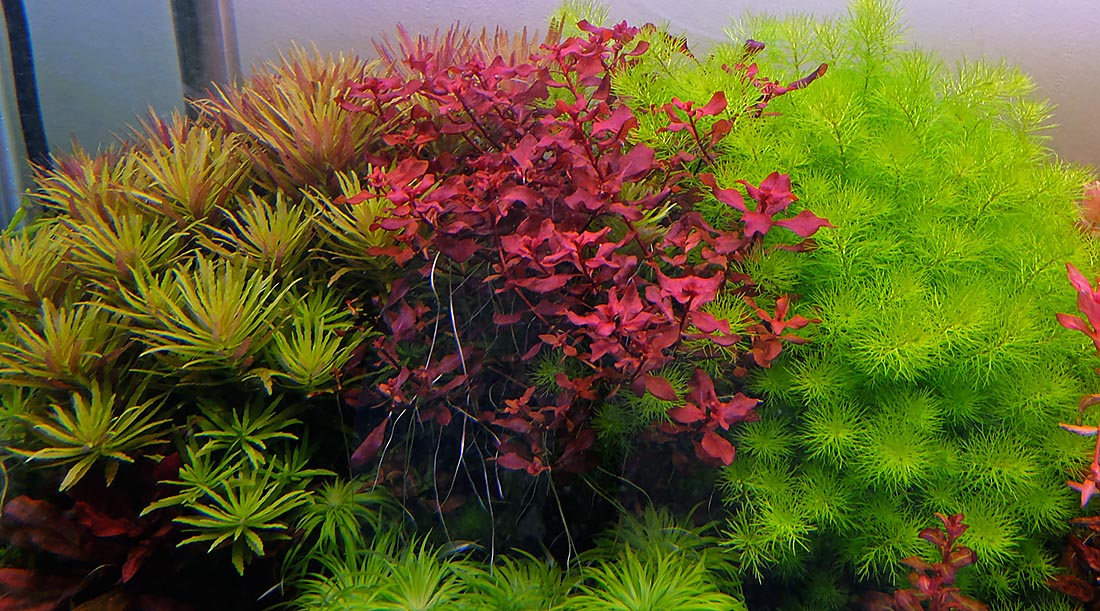Your Cart is Empty
Shop
We are a brand born of an obsession with performance, a belief in good science, and a knack for invention.
Read our story.
We are a brand born of an obsession with performance, a belief in good science, and a knack for invention.
Read our story.

Good Science
We define it as a combination of discerning research and real world results.
We define it as a combination of discerning research and real world results.

3 Key pillars for aquatic plant growth
June 13, 2022 3 min read

All aquarium plants need 3 things for growth. Aquarium plants that don't get enough of each will deteriorate slowly over time. The basic process that powers plant growth is photosynthesis, which is in turn dependent on 3 key factors.
LIGHT
Light is crucial for photosynthesis, which powers all plant growth and metabolism. Photosynthesis only happens during the light window, and only works when there are adequate nutrients and CO2 available.
Matching the right amount of light to the needs of the plant is intuitive 'on land' but often overlooked in freshwater aquariums. Do we plan to grow shade plants or plants originating from open lakes? The light requirements for the former is very different from that of the latter.
Most carpets require stronger light to grow well, in the same vein that the grass patch in a sunny outdoor lawn tends to grow better than the patch under heavy shade. Many red/colored plants exhibit more intense pigmentation under stronger lighting as well.
Many default aquarium kits (tanks + light + filter and/or other accessories) come with aquarium light that don't produce enough light to grow more demanding aquarium plants.
This does not mean that expensive lighting is always good - there are many expensive lighting systems on the market with mediocre performance. On the budget end, so choosing lights can be tricky for beginners. LED spotlights are cheap and produce a lot of light for folks that don't mind constructing DIY mounts even if they may not have the most aesthetically pleasing color rendition.
Light spectrum play an important role in rendering colors well visually, and have a significant impact on plant pigmentation for red plants.
Stronger lighting needs to be paired with the other two variables below, as the elevated growth rates also increases demand for nutrients and CO2.
There are a few important angles to which to understand lighting
What is the strength of a light?
What is the right spectrum?
Is T5 light or LED better?

Many picky species will require strong light to show good colors and form.
NUTRIENTS
All plants need a set of elements to grow well. Some of these nutrients may be readily available naturally in our tap water. Fish waste also provides some. However, many elements will be still missing if we don't add them. Fundamentally, it is important to meet the nutrient requirements of specific plants.
Optimal fertilization is one of the core pillars for great plant health. We can achieve this through aquarium plant substrate (for rooted plants) and through water column dosing. Consistency is the key.
Do I really need to add fertilizers?
How and what should I dose?
Is fish waste alone adequate?

Most colored plant species are quick let you know if your fertilization regime is not adequate - through pale leaves and thin stems.
CO2
Carbon dioxide levels in natural lakes (especially in areas with rich aquatic plant life) are high (10-40+ppm) due to decomposition of organic material that builds up CO2 gas, compared to the general equilibrium levels (2-3ppm) in a standard fish tank that has no CO2 injection.
Having optimal levels of CO2 in the tank has a big impact on plant health and quality of growth, as ~40% of plant dry mass is made out of carbon. This directly also affects algae presence/absence in a tank as algae presence has strong correlation to overall plant health.

Density, good plant form and color are all tied to having optimal CO2 levels.
Skipping CO2 injection still allows us to have beautiful planted tanks - if we pay special attention to choosing plants that can grow well in lower equilibrium levels of CO2.
Which plants grow well without injected CO2?
How to set up a CO2 system for planted aquarium?
unlock your true potential
Grow anything, defeat algae, create amazing aquascapes






















